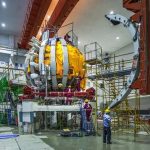1. Technological Breakthrough: Neutral Atoms vs. Superconductors
Atom Computing’s quantum computer employs neutral ytterbium atoms trapped in a 2D laser grid as qubits, diverging from IBM and Google’s superconducting approaches. Key innovations include:
- Scalability: The laser-trapped atomic array allows rapid expansion of qubit count, with plans to increase by an order of magnitude every few years.
- Stability: Neutral atoms maintain quantum coherence for up to 1 minute, far exceeding the 70–80 microsecond coherence time of IBM’s Osprey.
- Error Correction Advantage: Extended coherence time enhances fault tolerance, critical for complex algorithms like Shor’s factoring.
2. Potential Applications and Industry Impact
This milestone accelerates practical quantum computing applications:
- Cryptography: Capable of factoring 100-digit numbers, threatening current RSA encryption.
- Optimization: Demonstrated 1-billion-element database searches with Grover’s algorithm.
- Material Science: Simulating molecular interactions for drug development and energy storage.
Atom Computing plans to offer cloud-based access in 2024, enabling collaborations with academia and enterprises.
3. Challenges and Unresolved Issues
Despite progress, significant hurdles remain:
- Qubit Quality vs. Quantity: Higher qubit counts don’t guarantee superior performance. Only a fraction of Atom’s 1180 qubits may be usable for logical operations.
- Technical Limitations: Neutral atoms require ultra-high vacuum and low temperatures, complicating real-world deployment.
- Standardization Void: Cross-platform comparisons are hindered by divergent qubit architectures (neutral atoms vs. superconductors).
4. Ethical and Societal Implications
The breakthrough raises urgent questions:
- Security Risks: Quantum decryption could undermine global data protection systems.
- Workforce Disruption: Industries relying on classical computing may face obsolescence.
- Access Inequality: High costs and technical barriers risk concentrating quantum advantages among tech giants.
Conclusion
Atom Computing’s 1000+ qubit achievement signifies a watershed moment, yet the path to fault-tolerant quantum computing remains long. As IBM prepares its 1121-qubit “Condor” and China advances photonic systems, international collaboration and ethical frameworks must evolve alongside hardware. The quantum era is dawning, but its revolutionary promise hinges on overcoming both technical barriers and societal preparedness.
















